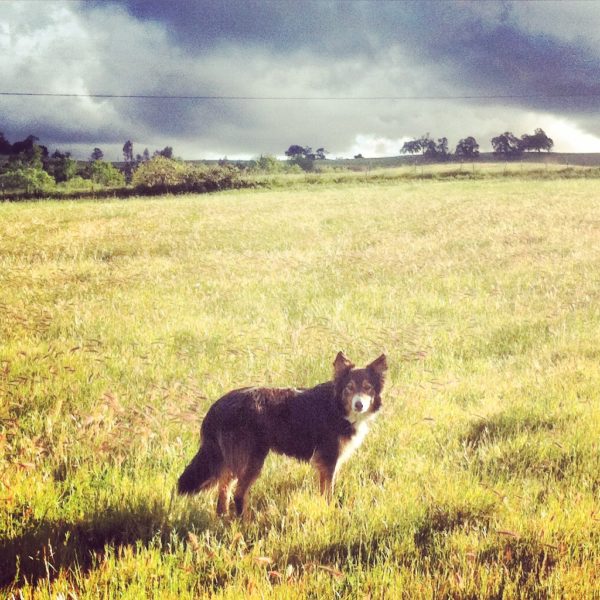Hi-tech isn’t always the answer
Contributed by Dan Macon
Modern farming, in many ways, mirrors the technological trends in our society at large. Global positioning systems help farmers assess crop yield and soil fertility. Computerized irrigation systems ensure that water is delivered to fields when and where it’s needed – and in carefully calibrated quantities. Aerial drones with GoPro cameras help farmers gain a birds-eye view of their vineyards and orchards. But while those of us who raise cattle and sheep on rangeland use a fair amount of twenty-first century technology, much of our day-to-day work is accomplished in ways that our grandfathers and great-grandfathers would recognize – not because we’re tradition-bound, but because we’ve found no better way to care for grazing livestock.
My family has a small-scale commercial sheep operation near Auburn. For more than half the year, our sheep graze on rangeland – land that is too remote and rugged for irrigation. I also work as the herdsman at the University of California’s Sierra Foothill Research and Extension Center (SFREC) in Browns Valley. My work involves caring for 800-900 head of cattle and 5700 acres of rangeland on the north bank of the Yuba River. The terrain varies from gently rolling grasslands to brush-covered ravines and rocky cliffs.
To manage these rangelands effectively – and to care for the cattle and sheep that graze them – I move animals to new pastures frequently. The nature of the land that we graze – and the nature of the animals that graze it – requires me to rely on four-legged partners on a daily basis. Without my dogs and horses, my work would be impossible.
 For our sheep operation, we try to minimize the number of times that the sheep need to be loaded into our stock trailer. This means we mostly walk them to new pastures – sometimes we’ll walk them as far as 2 miles to another property. My dogs, Mo and Ernie, are border collies born to this work – they live to herd sheep. One person and two dogs can move our flock 2 miles in less than an hour – the same move would take half a day with truck and trailer.
For our sheep operation, we try to minimize the number of times that the sheep need to be loaded into our stock trailer. This means we mostly walk them to new pastures – sometimes we’ll walk them as far as 2 miles to another property. My dogs, Mo and Ernie, are border collies born to this work – they live to herd sheep. One person and two dogs can move our flock 2 miles in less than an hour – the same move would take half a day with truck and trailer.
At SFREC, bigger animals, larger fields and more rugged topography requires me to add a horse to my stock-raising “technology.” While some of the field station can be covered on an all-terrain vehicle, much of it is too steep to make this mode of transportation safe. Along with Mo and Ernie, I use the SFREC horses (Lulu and Rose) almost daily.
 Beyond necessity, I find that this old-fashioned stockmanship has other advantages. When we’re gathering cattle from brushy fields, the dogs and horses find animals that I can’t see. Similarly, the dogs can gather a flock from a distant hillside in less time than it would take me to hike to the top of the hill (and with far less effort on my part!). In most situations, two dogs and a horse are more effective than three or four extra people! Walking or riding horseback through these pastures gives me a better sense of the condition of the animals and the grass than viewing them from the cab of a pick-up, or even from an ATV – I notice more when I’m moving at a walking pace.
Beyond necessity, I find that this old-fashioned stockmanship has other advantages. When we’re gathering cattle from brushy fields, the dogs and horses find animals that I can’t see. Similarly, the dogs can gather a flock from a distant hillside in less time than it would take me to hike to the top of the hill (and with far less effort on my part!). In most situations, two dogs and a horse are more effective than three or four extra people! Walking or riding horseback through these pastures gives me a better sense of the condition of the animals and the grass than viewing them from the cab of a pick-up, or even from an ATV – I notice more when I’m moving at a walking pace.
Because I rely on my dogs and horses professionally, my relationship with them goes far deeper than any pet I’ve ever owned. My work also requires interspecies communication, which is complicated! Just think about all of the communication that has to happen when we’re moving cattle – the dogs are communicating with the cattle and with me. The horse is also communicating with me and the cattle. The cattle have to try to communicate with a horse, a human and a dog. In all of these interconnecting networks, the human (me) is probably the least adept at understanding what the other species are trying to “say.”
And so while I’ve embraced technology in other aspects of my life – I’m writing this on an iPad while I listen to the Giants game on my iPhone – much of my work is accomplished with “technology” that pre-dates the microchip and even internal combustion engine! I think I could live without my cell phone and my laptop before I could live without my horses and dogs!
